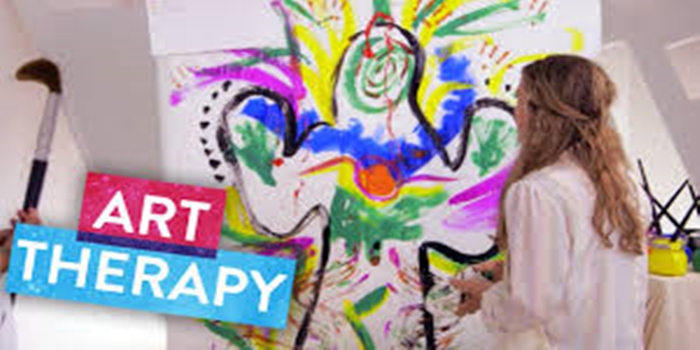In this blog, we explained the meaning of therapeutic art practices, the principles, types, and we also talked about the benefits.
Definition
Therapeutic art practices involve using creative activities like drawing, painting, and sculpting to facilitate emotional expression and healing, often in a therapeutic setting. These practices aim to help individuals explore and understand their feelings, thoughts, and experiences, and can be particularly beneficial for those struggling with mental health issues, trauma, or other challenges.
The Principles Therapeutic Art Practices:
- The Creative Process as a Therapeutic Tool:
Engaging in art-making provides a non-verbal outlet for emotions and thoughts, allowing individuals to process experiences and communicate in ways that words may not fully capture.
- The Importance of the Therapeutic Relationship:
A strong therapeutic alliance, built on trust, empathy, and a safe environment, is crucial for the therapeutic process to be effective.
- Universality of Creative Expression:
All human beings possess a natural inclination towards creative expression, regardless of artistic skill or experience.
- Non-Judgmental Approach:
Art therapy and expressive arts therapy focus on the process of creation rather than the final product, encouraging individuals to explore their inner world without fear of judgment.
- Self-Reflection and Insight:
The act of creating can lead to increased self-awareness and understanding, as individuals may gain insights into their emotions, thoughts, and behaviors.
- Transcending Verbal Communication:
Art can bypass the logical and analytical parts of the brain, allowing access to deeper, subconscious material that may be difficult to express verbally.
- Promoting Emotional Regulation and Coping Skills:
These practices can help individuals develop new coping mechanisms and manage emotions more effectively, ultimately improving their overall well-being.
- Expanding Perspectives and Enhancing Creativity:
Engaging in artistic activities can foster creativity, imagination, and a broader perspective on life’s challenges.
- Promoting Self-Esteem and Agency:
The ability to create and express oneself through art can boost self-esteem, empower individuals, and foster a sense of control over their lives.
The Types of Therapeutic Art Practices include:
- Art Therapy:
Focus:
Utilizing visual arts like painting, drawing, collage, and sculpture to express emotions and experiences.
Techniques:
Drawing and Painting: Facilitates emotional expression without verbal articulation.
Collage: Allows for the assembly of existing materials to express feelings and build narratives, especially useful for those feeling overwhelmed.
Sculpture: Provides a tactile and three-dimensional way to express emotions.
Other techniques: Can include coloring, doodling, and scribbling.
Benefits:
Helps individuals explore their thoughts, feelings, and behaviors, and can be used to treat a wide range of mental health conditions.
- Expressive Arts Therapy:
Focus:
A multimodal approach that integrates various creative arts therapies, including art, music, drama, and dance/movement.
Techniques:
Music Therapy: Using music to express emotions and improve well-being.
Dance/Movement Therapy: Exploring movement and dance to promote emotional, physical, and social integration.
Drama Therapy: Using dramatic arts techniques like role-playing and storytelling to facilitate therapeutic goals.
Writing Therapy: Engaging in journaling, poetry, or storytelling to express emotions and experiences.
Benefits:
Offers a wide range of tools for healing and personal development, and can be particularly helpful for individuals who have difficulty expressing themselves verbally.
- Other Therapeutic Art Practices:
Dance and Movement Therapy:
Using body movement and dance to explore emotions and improve physical and mental well-being.
Dramatherapy:
Utilizing dramatic arts techniques like role-playing, improvisation, and storytelling to facilitate therapeutic goals.
Writing Therapy:
Engaging in writing activities like journaling, poetry, or creative writing to express emotions and experiences.
No art skills required:
Therapeutic art practices are not about creating “art” in the traditional sense, but about using the creative process as a tool for emotional exploration and healing.
Therapist guidance:
A qualified therapist guides the client through the process, helping them to explore their emotions and experiences in a safe and supportive environment.
Individualized approach:
Therapists tailor the therapeutic approach to the individual’s needs and go,
The Benefits Therapeutic Art Practices include:
Mental and Emotional Well-being:
Stress Reduction:
Art therapy can help individuals manage stress and anxiety by providing a creative outlet for emotional expression.
Emotional Processing:
It allows individuals to process difficult emotions and experiences in a non-verbal way, which can be particularly helpful for those who struggle with expressing themselves verbally.
Improved Communication:
Art therapy can enhance communication skills, both verbal and non-verbal, by encouraging self-awareness and expression.
Self-Esteem and Confidence:
Engaging in creative activities can boost self-esteem and confidence, as individuals experience a sense of accomplishment and pride in their artwork.
Cognitive Function:
Art therapy can improve cognitive function, particularly in areas like memory and attention.
Emotional Resilience:
By learning to express and process emotions through art, individuals can build emotional resilience and develop healthier coping mechanisms.
Conflict Resolution:
Art therapy can help individuals identify and resolve conflicts by providing a safe space for expressing emotions and exploring different perspectives.
Physical Health:
Reduced Pain:
Art therapy may help reduce physical pain and discomfort, particularly for individuals with chronic conditions.
Improved Mood:
Engaging in creative activities can positively impact mood and reduce symptoms of depression and anxiety.
Enhanced Quality of Life:
For individuals with chronic illnesses, art therapy can improve quality of life by enhancing their ability to cope with symptoms and manage their well-being.
Other Benefits:
Personal Growth:
Art therapy provides a unique opportunity for personal growth and self-discovery, as individuals explore their inner thoughts, feelings, and motivations.
Social Connection:
Group art therapy sessions can foster social connections and reduce feelings of isolation.
Creative Outlet:
Art therapy provides a safe and supportive environment for individuals to explore their creativity and engage in artistic expression.
Conclusion
Therapeutic art practices, like art therapy, offer a powerful and adaptable approach to mental and emotional well-being. By facilitating creative expression and nonverbal communication, they can empower individuals to explore their thoughts, feelings, and experiences, ultimately promoting healing, growth, and self-discovery. These practices are particularly effective for individuals who may find it challenging to express themselves verbally, offering a safe and supportive space for exploring complex emotions and personal narratives.

